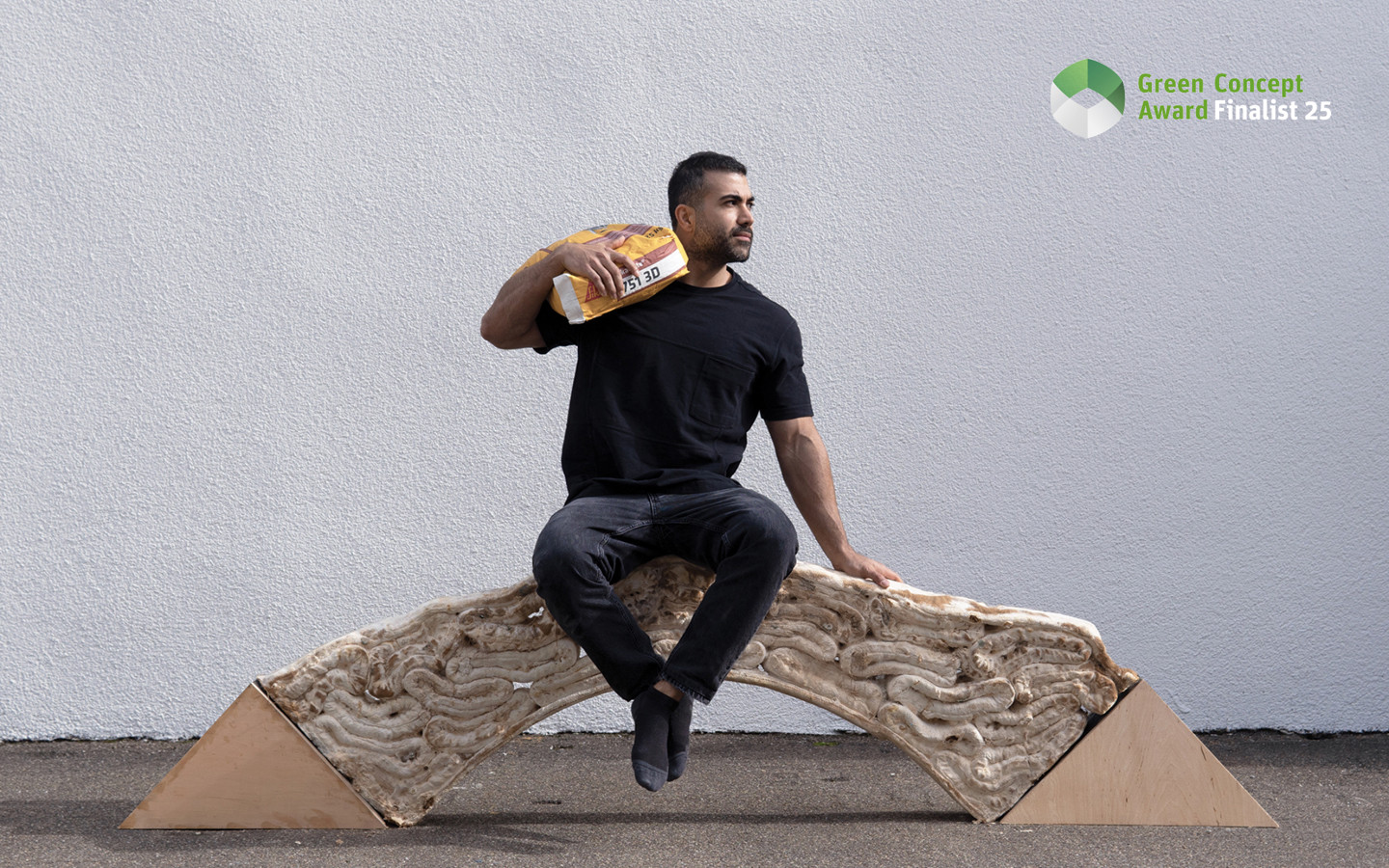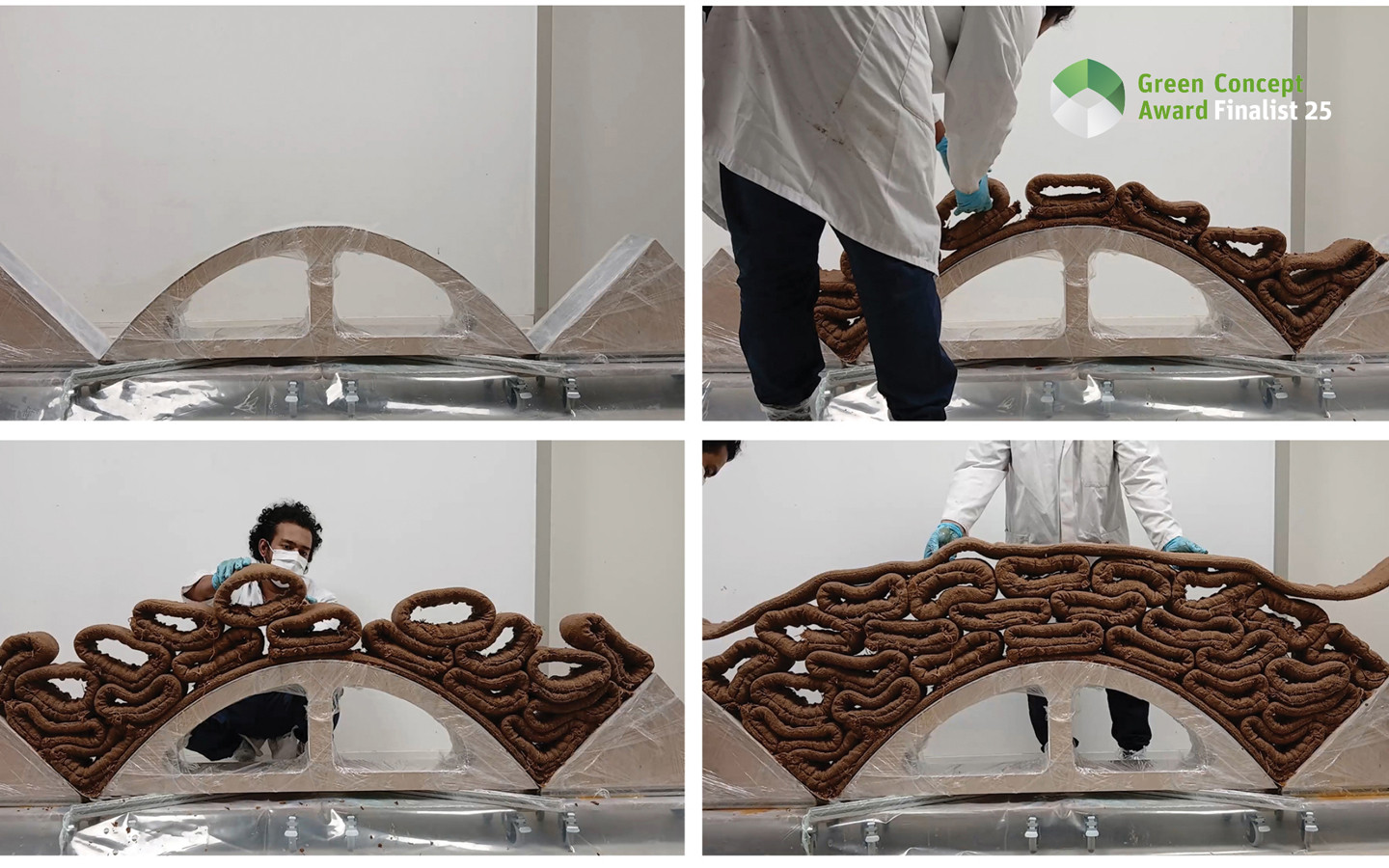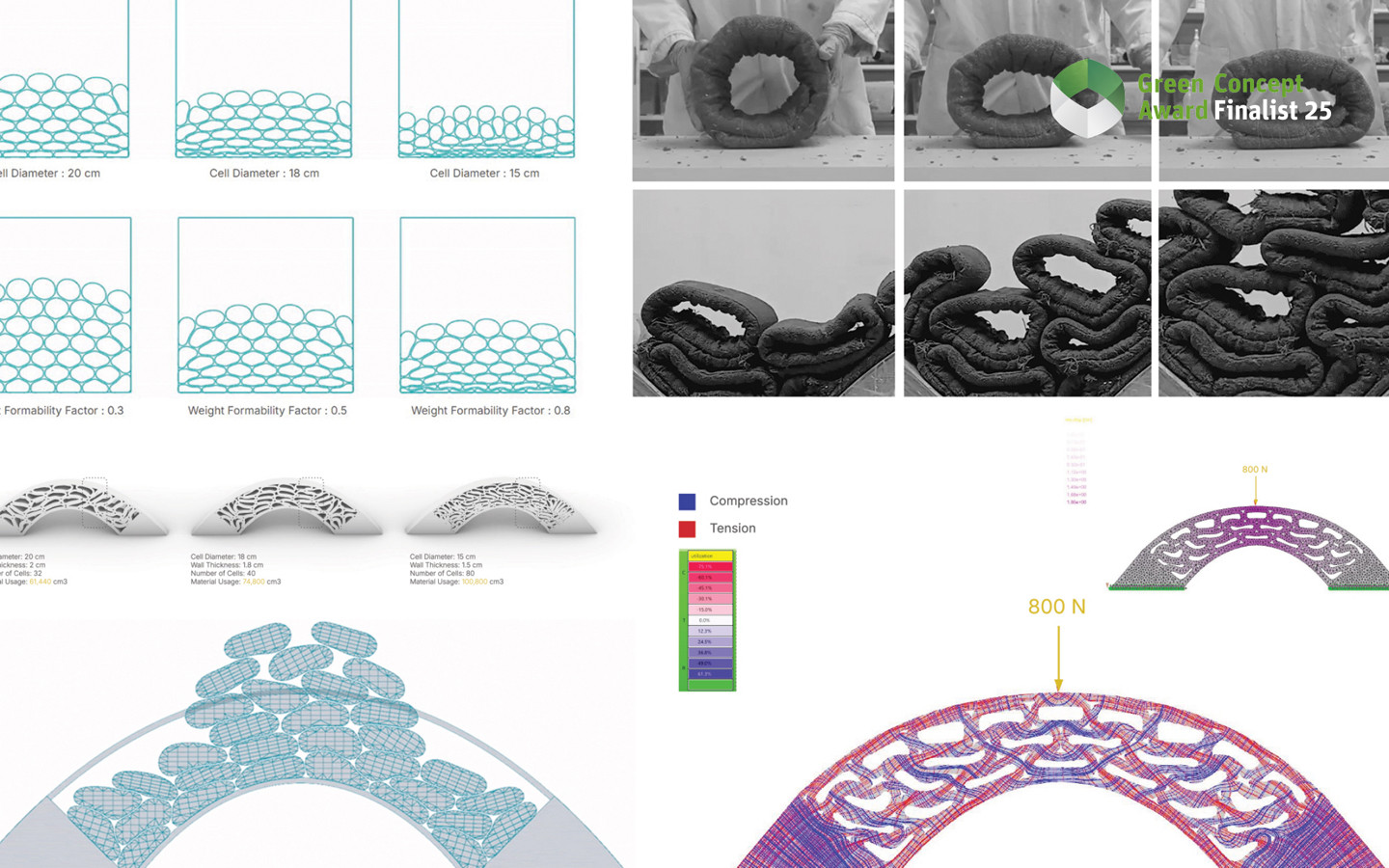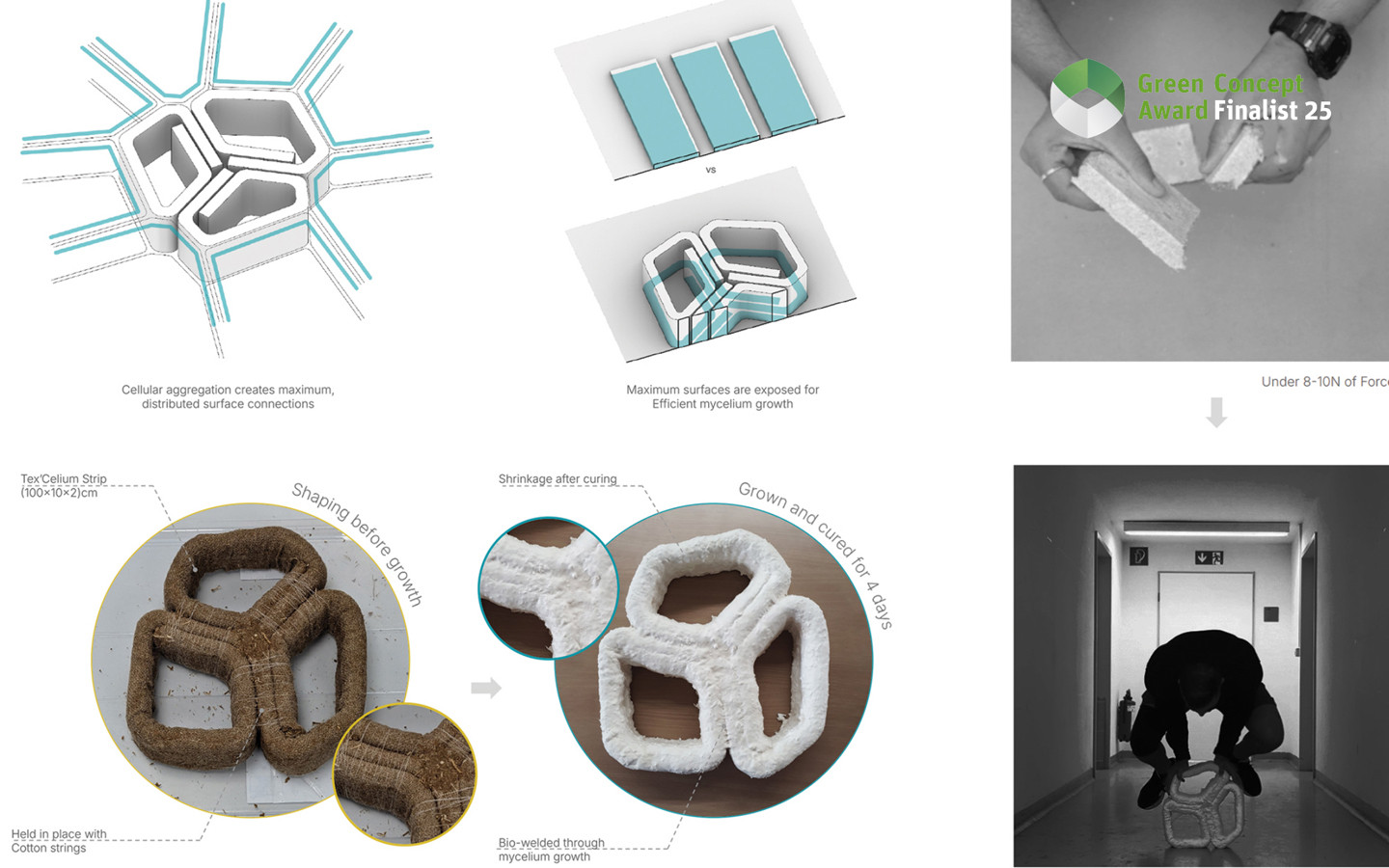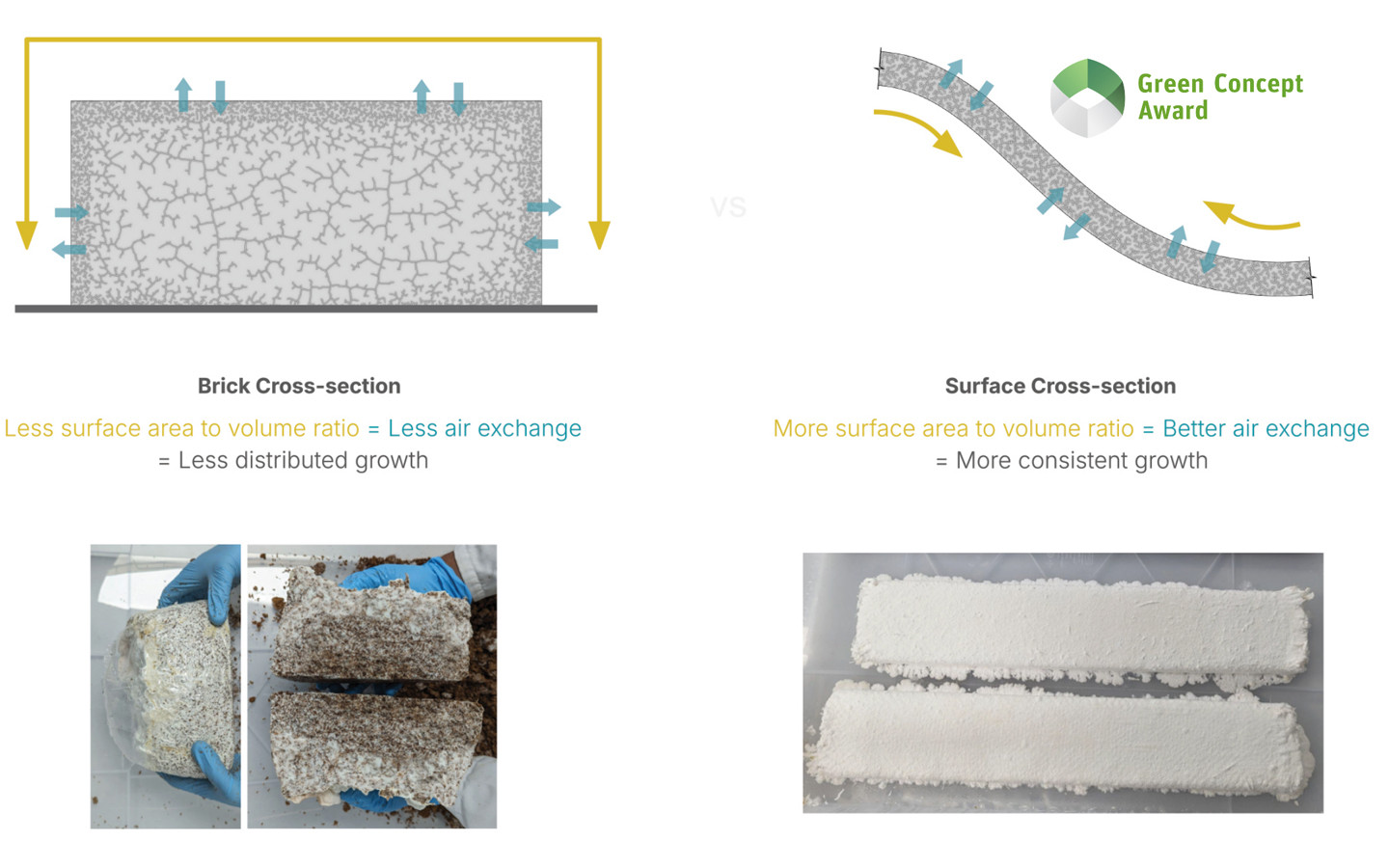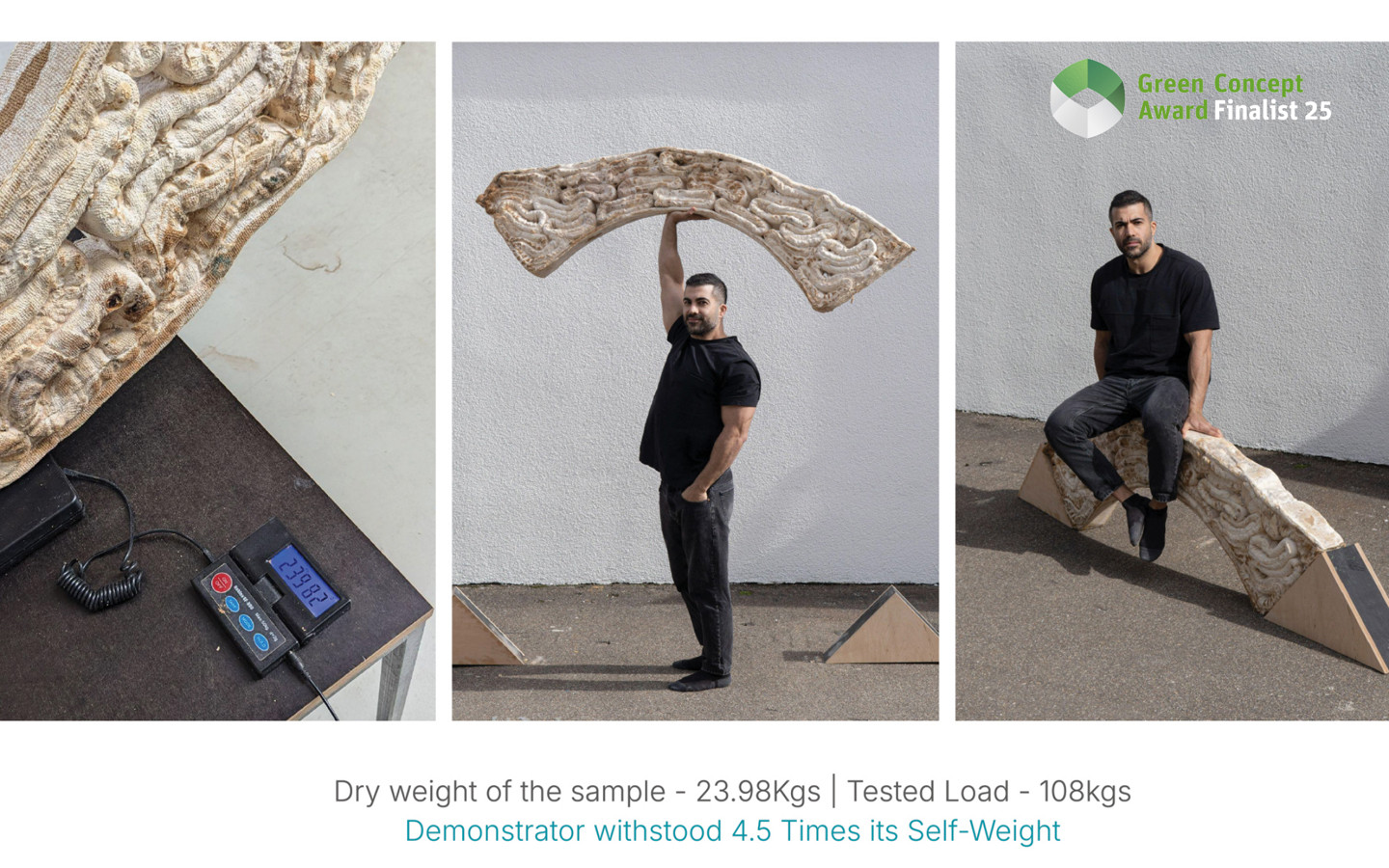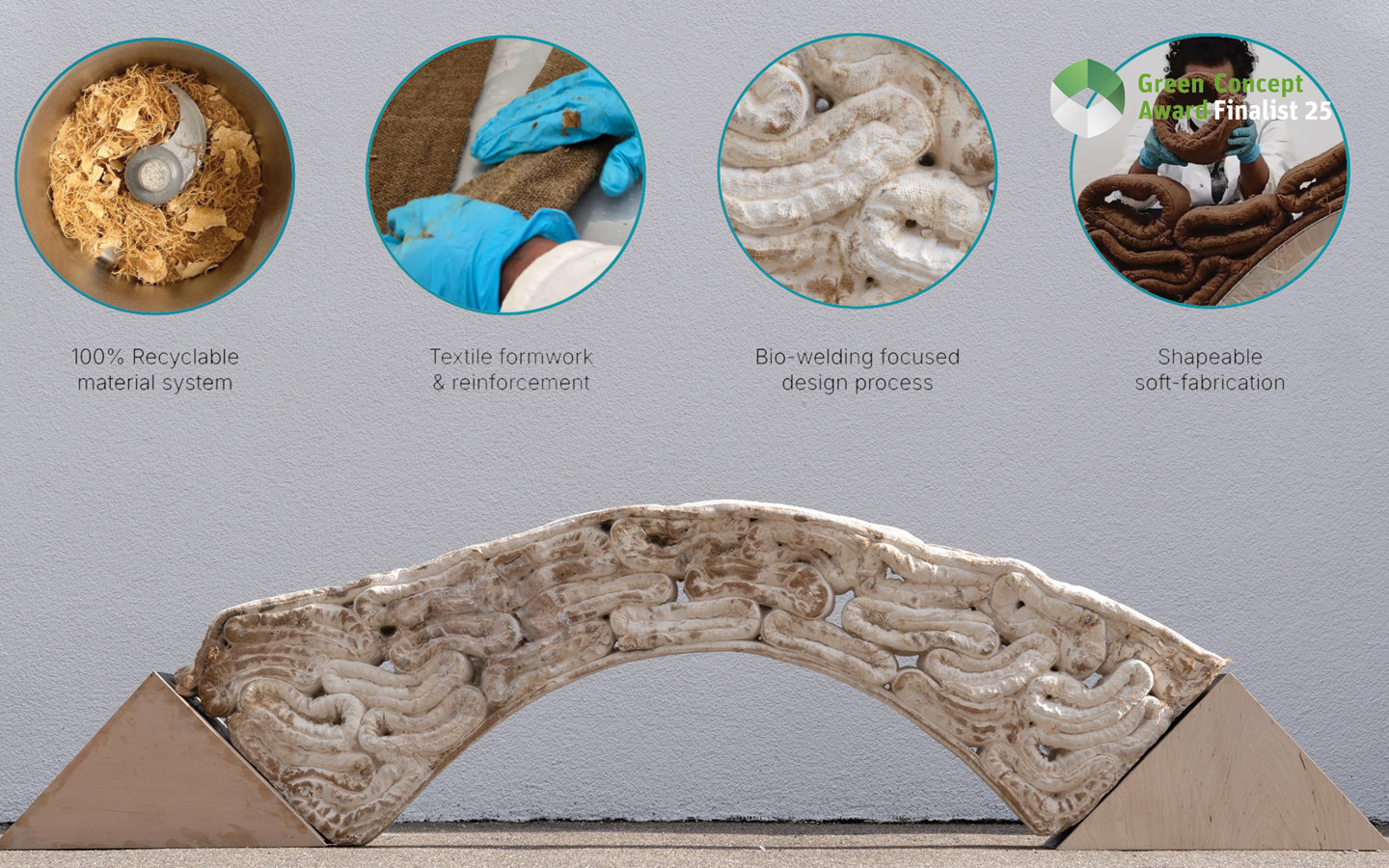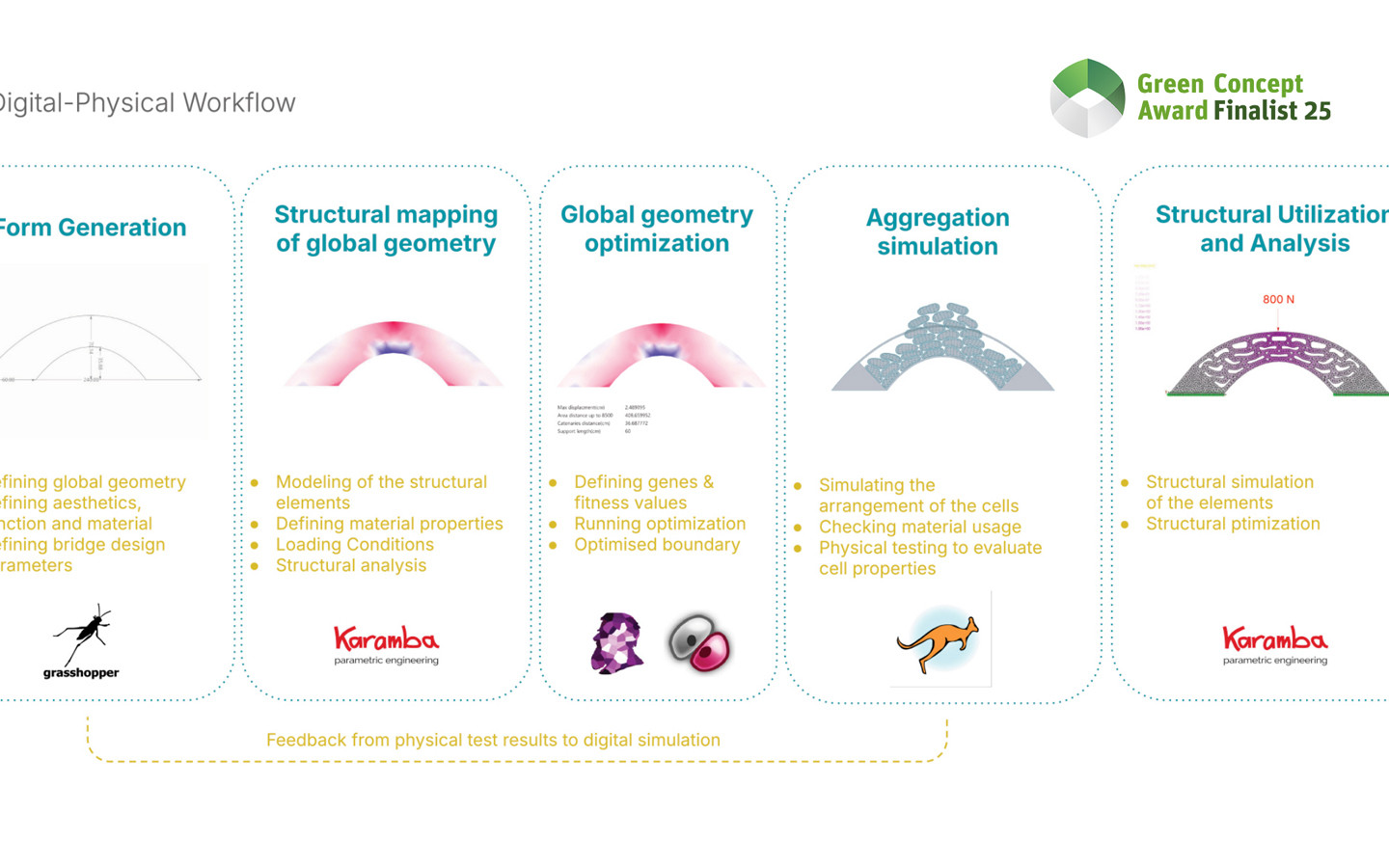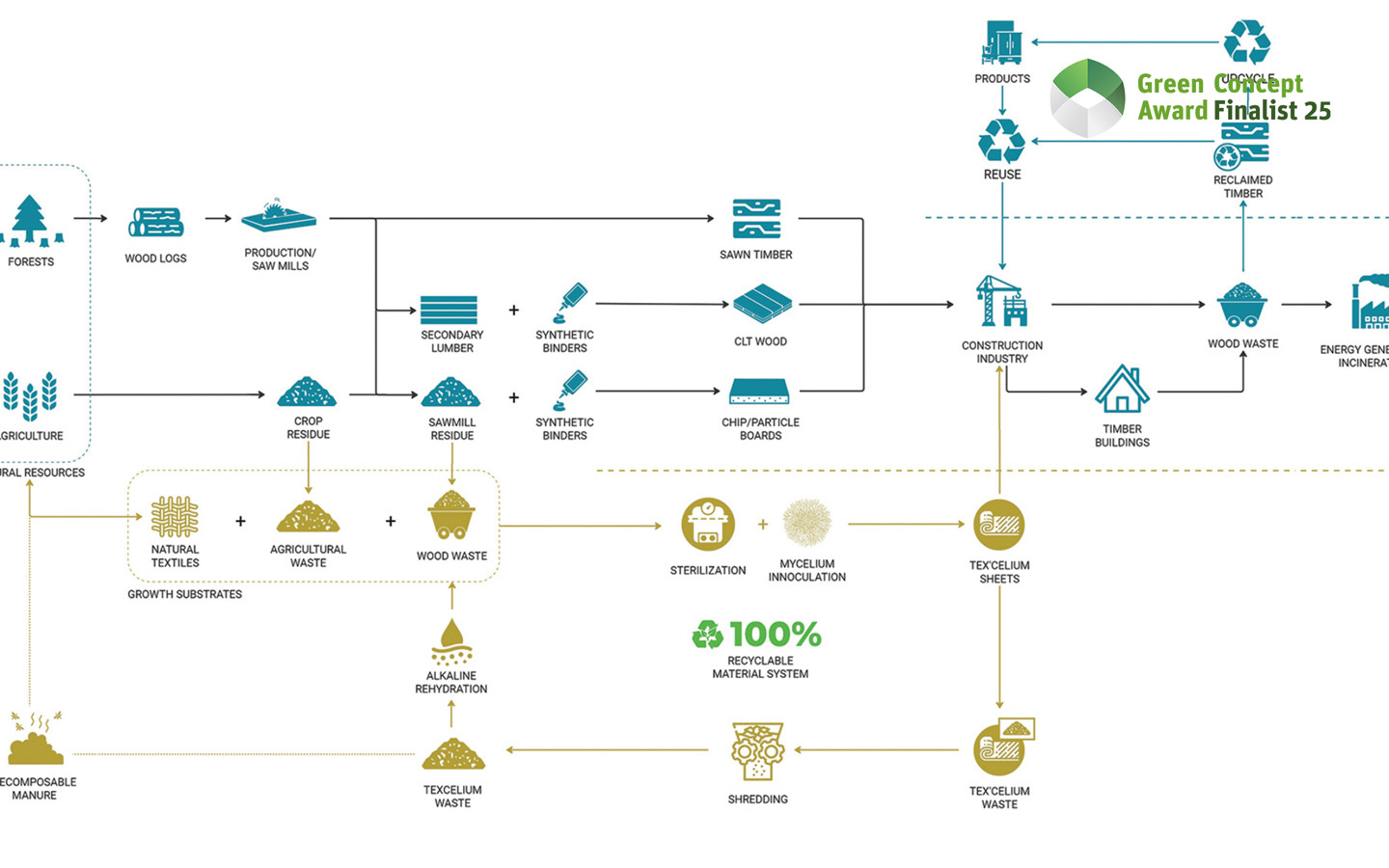Living Tex'Celium
Nachhaltiges Design mit Myzel-Textil-Verbundstoff
Living Tex'celium ist ein nachhaltiges Materialsystem, das durch das Wachstum von Myzel auf landwirtschaftlichen und hölzernen Abfällen entsteht und recycelbare Verbundstoffe bildet. Es enthält Jute-Textilien, um die strukturellen Grenzen herkömmlicher Myzel-Verbundstoffe zu überwinden. Das System sieht flexible, transportable Module für die digital gesteuerte Herstellung vor Ort vor. Das Myzel wächst und verschweißt biologisch, behält seine Form bei und bildet nach dem Aushärten starke Verbindungen. Ein Brückenprototyp hielt dem 4,5-fachen seines Gewichts stand und bewies damit seine Tragfähigkeit. Die Tex'celium-Einheiten sind innerhalb von 7 Tagen vollständig recycelbar und unterstützen so umweltfreundliches Bauen.
Firma/Institution
University of Stuttgart
Participants are Students of M.Sc ITECH program. The Integrative Technologies & Architectural Design Research M.Sc. Program (ITECH) at Uni Stuttgart is an interdisciplinary, research-oriented, experiment-based program shaped around contemporary aspects of the built environment and practice. The goal of the ITECH program is to prepare a new generation of students from different disciplines for the continuing advancement of technological and computational processes in development of the built environment through merging the fields of architecture, engineering, construction and natural sciences.

Land
Deutschland
Designer(s)
Kalaivanan Amudhan, Mahdi Jafari & Ali Zolfaghari

The designers, architects from India, Afghanistan and Iran, passionate about sustainable construction, spent a year researching mycelium to explore its unique advantages over traditional materials in architecture. They carried out extensive experiments with substrate combinations, mechanical testing, and prototyping to overcome the material's limitations. By leveraging computational design workflows, they created a fully sustainable and recyclable building system tailored for architectural applications. This project was a part of their master's thesis at the University of Stuttgart, Germany.
